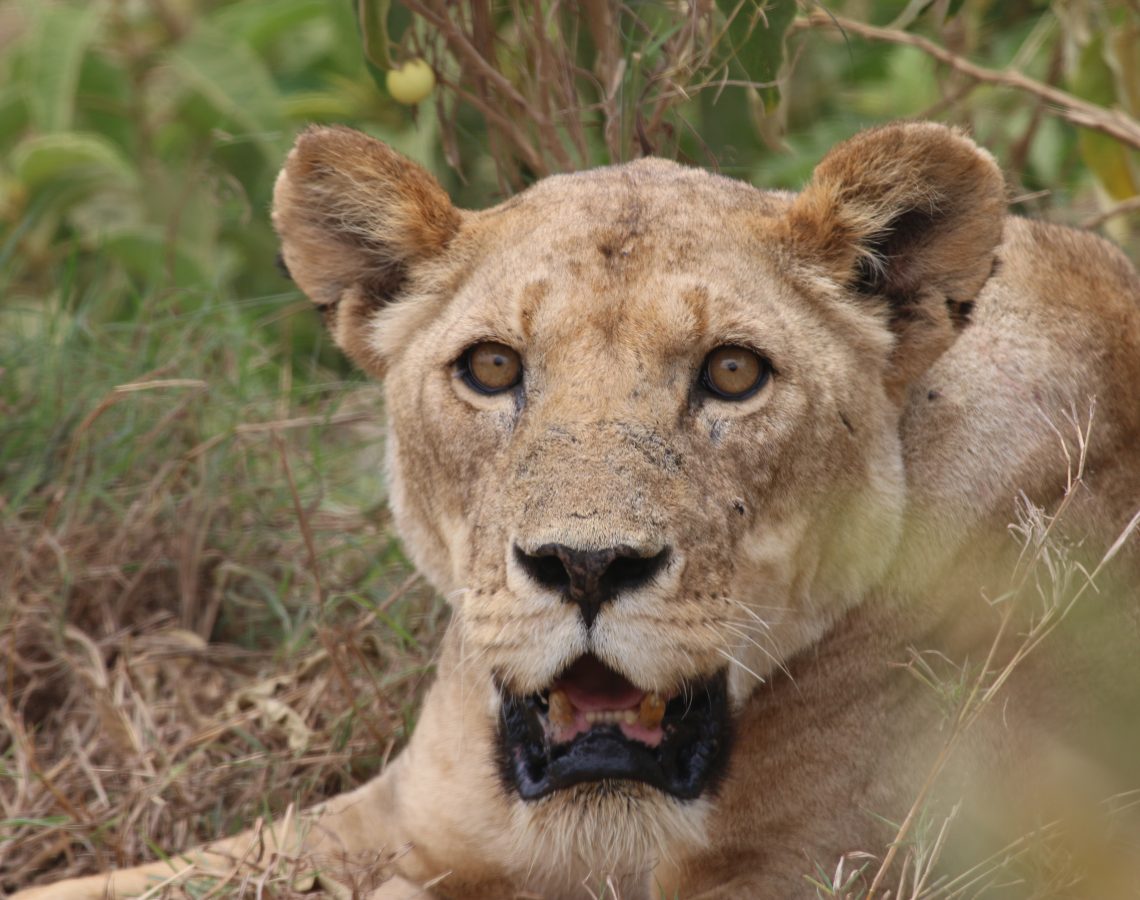The End of an Era

Nearly two decades ago, very few lions were roaming the lands surrounding Amboseli National Park. Most roamed alone. But there was one pride bold enough to travel in a larger group of up to eight individuals. They primarily resided in the Park but would travel out of the protected area and onto the Maasai lands mainly during the wet seasons, following the prey species as they moved out of the basin and up onto the areas that are primarily dry but turn lush for short periods, immediately after the annual rains. For many years, throughout the early 2000s, they were the only group of more than two individual lions detected outside of the protected area. And when on the Maasai lands, they inhabited a lush valley created by an ancient lakebed along the main road from Emali to Loitokitok towns. The rainy-season paradise called Empakaai teems with wildlife for a few weeks each year.
In 2004, this group had a litter of new cubs, and they were taught the migration of following the prey to the lush Empakaai as had been likely done for generations before them. As these cubs grew and became adults, a new era arrived in the region. The period of conservation. Several conservation groups had established in the area in the early 2000s. In 2006, Lion Guardians were founded, building on several years of lion research conducted in the area since 2003. During the rainy season of 2006, when this group of lions moved into Empakaai, the newly-hired Guardians began following them. One of the first females the Guardians named as one of “their” lions was the slightest of the young females in the group. They named her Nempakaai after the lush area where they spent the rainy seasons. The larger of the young females they named Nolakunte (she with the full belly) and an older female we believe could be their mother, the notorious Asama (the oldest free-living lion, to our knowledge) who was named in later years based on her boma-raiding behaviors (a boma is a livestock enclosure). After following the population of lions in and around Amboseli for two decades, we now know that these three lionesses and their offspring have contributed substantially to the repopulation of the entire ecosystem.
In the early days of Lion Guardians, we did not know how much time lions spent in the protected area versus on the non-protected lands. As is often suspected anywhere there is a landscape with protected, non-protected areas and large carnivores, we thought most lions lived in the national park and moved out at night and/or during specific seasons as we had observed with the Empakai group. But over the years, we’ve found that nearly 70% of lions live their entire lives only in the non-protected areas, coexisting with people and livestock on a daily basis. But we learned from Nempakaai and her group as they were the exceptions. This group spent over 90% of its time in the Park.
As years passed, their time in the Park increased when the primary Amboseli Park pride was broken up, and Nempakaai, her sister, and her mother took up residences in the prime territory of the Park. They were joined by Loonkito (the oldest free-living male lion, to our knowledge). They began having many cubs who grew quickly and had their own litters of cubs. Soon, the wet-season trips to Empakai stopped as they had all they needed within the Park. They started to travel to the south of the park at times, but only for very short periods and only when in dire need of food. After many years of having Loonkito as the reigning male (and an increasing amount of inbreeding occurring), Nempakaai and her coalition of females left the very large pride they had grown and moved to the eastern side of the Park where they found new males and seemingly settled in to a quieter life. Asama no longer raided bomas as she once did – when we saw them in their later years, they seemed settled and happy with a quiet simple life in the Park, away from their larger family.
Sadly, last week we received news that an emaciated elderly lioness had been speared, inside a boma, as she was stealing livestock. We were very saddened to find that it was Nempakaai. She was over 18 years of age and in a highly emaciated state which was, undoubtedly, the reason for her desperate attempt to kill livestock in a boma, as a last resort. Nempakaai was mainly a ‘good’ lion, resisting most livestock temptations and living off wild game nearly all the years of her life.
Thank you, Nempakaai, for the years of memories, for being a “good” lion, for all the lions you raised and contributed to the massive landscapes of southern Kenya. Your genes live on as your strong, adventurous offspring have dispersed far and wide, bringing pride to many areas of Kenya.



Leave a Reply